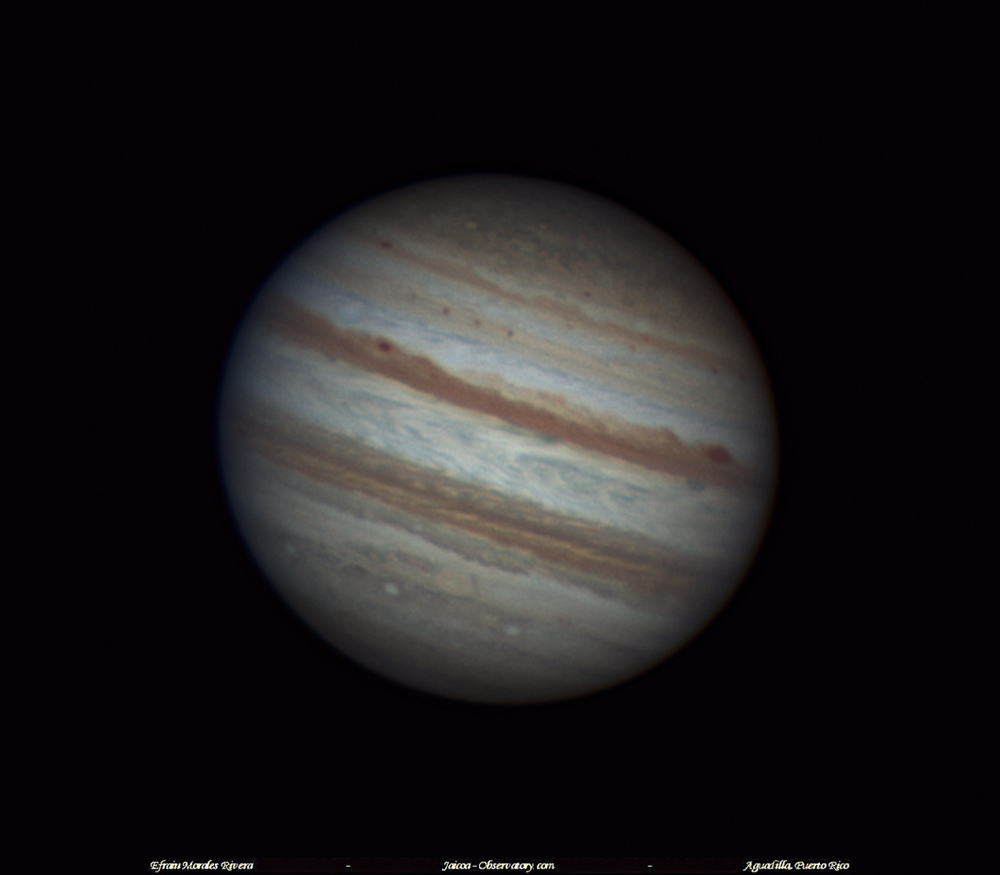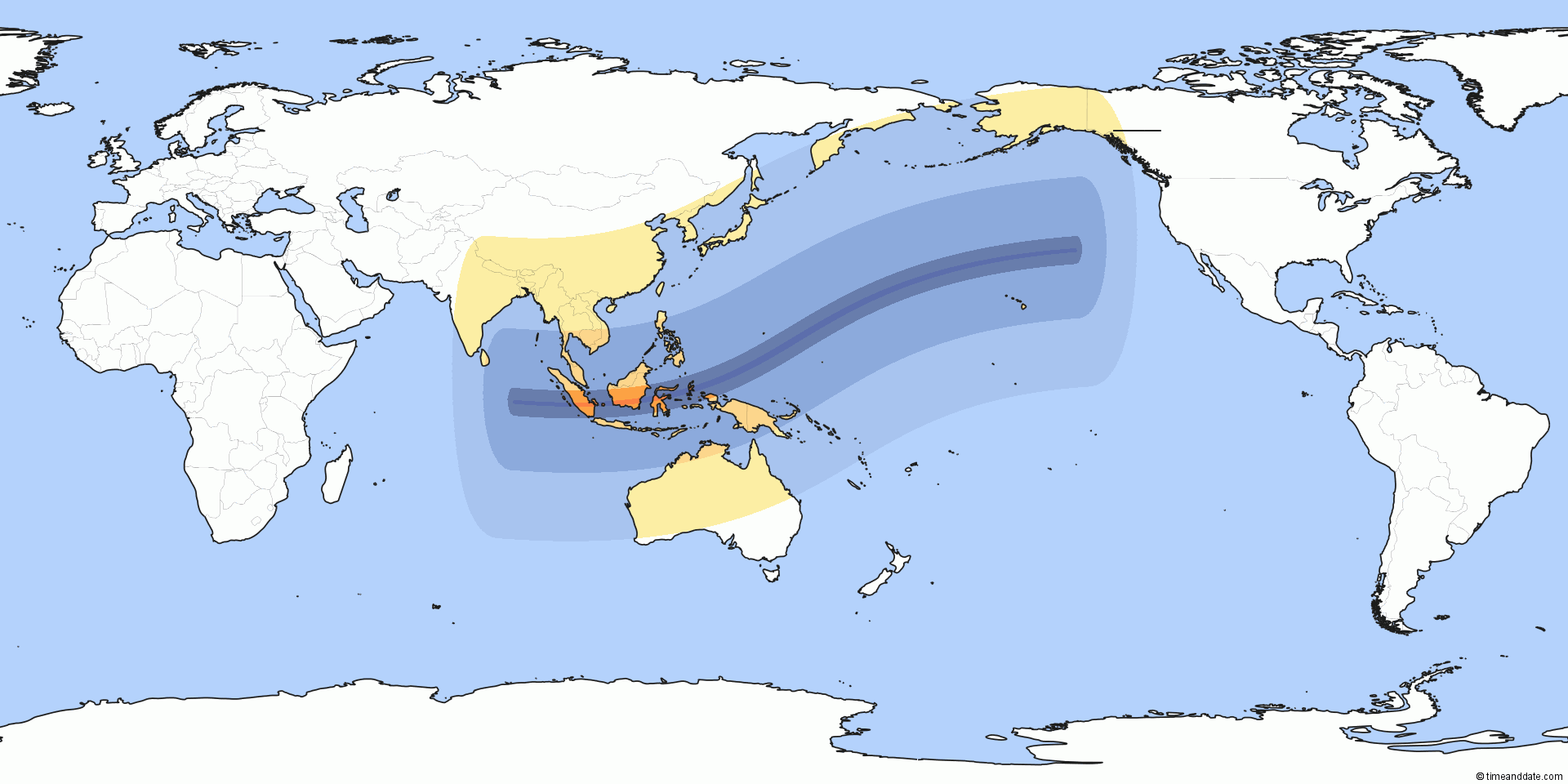This astronomy calendar of celestial events contains dates for notable celestial events.
In March 2016, you (hopefully) will be able to follow a total solar eclipse, a penumbral lunar eclipse and Jupiter at opposition among others. Enjoy.
March 8 – Jupiter at Opposition.

The giant planet will be at its closest approach to Earth and its face will be fully illuminated by the Sun. It will be brighter than any other time of the year and will be visible all night long. This is the best time to view and photograph Jupiter and its moons.
March 9 – New Moon.

The Moon will located on the same side of the Earth as the Sun and will not be visible in the night sky. This phase occurs at 01:54 UTC.
March 9 – Total Solar Eclipse.

A total solar eclipse will occur on March 9 2016. The path of totality will only be visible in parts of central Indonesia and the Pacific Ocean.

A partial eclipse will be visible in most parts of northern Australia and southeast Asia.
March 20 – March Equinox.

The March equinox occurs at 04:30 UTC. The Sun will shine directly on the equator and there will be nearly equal amounts of day and night throughout the world. This is also the first day of spring (vernal equinox) in the Northern Hemisphere and the first day of fall (autumnal equinox) in the Southern Hemisphere.
March 23 – Full Moon.

The Worm Moon will be full at 12:02 UTC. This Full Moon has also been known as the Full Crow Moon, the Full Crust Moon, the Full Sap Moon, and the Lenten Moon.
March 23 – Penumbral Lunar Eclipse.

During this type of partial eclipse the Moon will darken slightly but not completely. The eclipse will be visible throughout most of extreme eastern Asia, eastern Australia, the Pacific Ocean, and the west coast of North America including Alaska.
So, just watch the sky on these dates and if you are lucky and situated accordingly, you will have something awesome to experience.












[…] immediately after sunset, blazing away in the east at nightfall or early evening in early March. Jupiter reached opposition on March 8, at which time this brilliant world rises in the east at sunset, climbs highest up for […]
[…] So what’s going on? The upstick in fireballs is still unknown, but it may be linked to the spring equinox (March 20, 2016), during which more space rocks enter the Earth’s […]